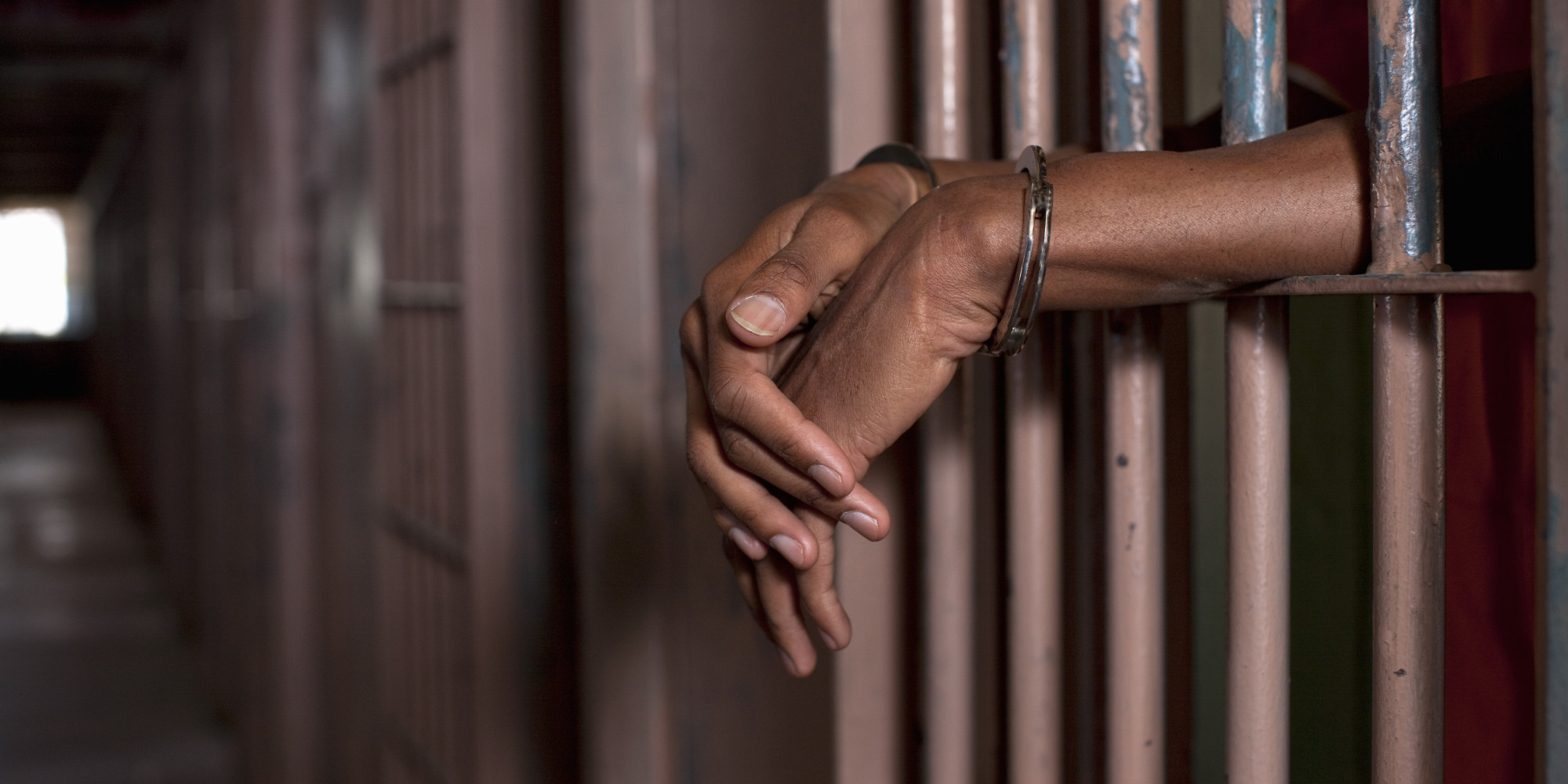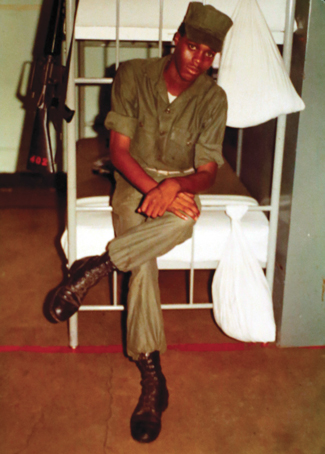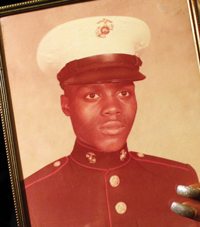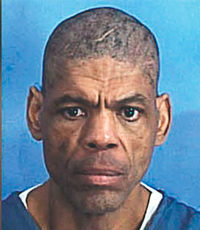
by Richard B. Muhammad and Saeed Shabazz
Special to the NNPA from The Final Call
(FinalCall.com) – Darryl Rainey, 50, had one month remaining on his two-year sentence for cocaine possession without the intent to sell. He was also battling mental illness and served his time in a Florida prison’s psychiatric ward. One night Mr. Rainey allegedly defecated on himself while in his cell. Prison guards allegedly handcuffed him and placed him in a shower for two hours where the water temperature was reported to have reached 180 degrees.
The steady stream of scalding water melted Mr. Rainey’s skin from his body, according to the Miami Herald. Nothing was left but chunks of his skin in the shower.
His death was listed as a heart attack.
Last February, mentally ill inmate Jerome Murdough died in his Rikers Island cell after being left unattended for hours in a cell that reached 101 degree temperatures. He had been arrested on a misdemeanor trespassing charge for sleeping in an enclosed stairwell of a Harlem public housing building and couldn’t make the $2,500 bail set for him, according to court records.
In 2013, Bradley Ballard, 39, was suffering from paranoid schizophrenia and diabetes. He stayed locked in his Rikers Island cell in New York for six days without care or medication.
According to the Associated Press, Mr. Ballard died shortly after receiving medical attention from a doctor who finally entered his cell. He was found naked, covered in feces, badly infected from a piece of cloth he had tied tightly around his genitals.
Jonathan Chasan, one of the lawyers representing his family in a civil wrongful death lawsuit, called the state’s review of his death “profoundly devastating.” It has recommended that federal civil rights violations be investigated.
Mr. Ballard had a long history of mental illness and an earlier assault conviction in New York. He was brought to Rikers Island from Texas in 2013 for changing his address without notifying his parole officer.
State investigators called Mr. Ballard’s treatment at Rikers “incompetent” even before his fateful final lockup, noting that his psychotropic medication had been mistakenly switched, which made him more irritable, and he didn’t receive regular insulin for his Type 2 diabetes.

An undated photo provided by family showing Jerome Anthony Murdough is seen March 12, 2014, in the Queens borough of New York. Murdough, a mentally ill, homeless former Marine arrested for sleeping in the roof landing of a New York City public housing project during one of the coldest recorded winters in city history, died in a Rikers Island jail cell that multiple city officials say was at least 100 degrees when his body was discovered. Murdough, 56, was found dead in his cell in a mental observation unit in the early hours of Feb. 15, 2013 after excessive heat, believed to be caused by an equipment malfunction, redirected its fl ow to his upper-level cell, the officials said.
|
After making a lewd gesture at a jail guard, investigators found that Mr. Ballard was locked up alone in his mental observation cell for six days and eight hours, a more detailed accounting than in earlier reports. Water was turned off after he flooded his cell and he was visited only twice in brief, minute-long episodes by health workers making rounds. At one point a jail guard sprayed deodorizer outside his cell, but did not get him help.
The review found that at least three top jail officials passed by Mr. Ballard’s cell during the six-day stretch though none ever summoned medical staff. One official, then-deputy warden Turhan Gumusdere, is seen on video outside Mr. Ballard’s cell in that time, according to two city officials familiar with the footage who spoke on condition of anonymity because of an ongoing criminal probe.
Bernadette Rabuy, policy and communications associate at the Prison Policy Initiative, called these abuses the injustice of the criminal justice system. Treating people horrifically is not helping in their rehabilitation, she told The Final Call.
Just over 4,300 inmates died while in local jails and state prisons in 2012, an increase of two percent from 2011, according to the most recent report from the Justice Department’s Bureau of Justice Statistics. The report, issued last October, noted that the number of deaths in local jails increased from 889 in 2011 to 958 in 2012.

Jerome Murdough, a mentally ill, homeless former Marine died in a Rikers Island jail cell that multiple city officials say was at least 100 degrees when his body was discovered.
|
“We don’t rank states because mortality occurs randomly and rates are very dependent on demographic distribution (i.e. age, sex, race, etc.) and we only calculate crude mortality rates, i.e. we do not take these factors into account. Counts are dependent on the prison population size, i.e. California and Texas have the greatest number of inmate deaths because they are the largest state prison populations in the U.S.,” said Kara McCarthy, a Bureau of Justice Statistics spokesperson.
“Deaths due to correctional officers likely contribute to both the homicide and accident numbers and rates, depending on how the coroner or medical examiner rules the death. However, we have not been able to produce usable numbers of subcategories of deaths due to accidents (i.e. restraint death, accidental all, transport accident) or homicides (by inmate, by other) because the numbers are so small, the results would be statistically unstable, and therefore, unusable for our purposes,” she said.
“Neglect is typically a legal, rather than medical determination, so no, we would not measure that number,” Ms. McCarthy said.
While the Bureau of Justice Statistics blames suicide and health problems, such as cancer and heart attacks for most deaths, others say the reporting is deeply flawed, numbers are skewed and no one goes to prison to die because of direct abuses or staff failures to care for inmates.
Who is watching the watchers?
“I’d say that the problem with prisoners being killed by staff either directly or indirectly has always been a problem in our nation’s prison system. The question really is what is the scope and whether the scope is getting better or worse; that’s a little hard to tell,” said Alex Friedmann, managing editor of Prison Legal News, a publication dedicated to exposing and correcting criminal justice system failures.

Dade Correctional Institution inmate Darren Rainey, who was mentally ill, died after being allegedly locked up for hours in a scalding hot shower.
|
“You need independent agencies that investigate the departments of corrections for allegations of abuse and wrongful death or excessive use of force and so on. You can’t expect an agency to investigate itself adequately, that’s never worked. You have too many vested interests, you have too much good ole boy network, particularly in the South. So you got to have completely separate agencies, independent of the department of corrections that will investigate abuses in that department of corrections. And that can be an ombudsman, that can be a separate law enforcement agency, that can be a legislative agency or a separate executive agency,” he said.
But the prison reform advocate stressed most corrections departments are generally not beholden to anyone—except the governor who appoints the corrections commissioner. Most departments are subject to internal investigations, guards are rarely charged with crimes, virtually never seriously punished and there is almost no accountability, whether the prisons are public or privately-owned, he added.
“There needs to be prosecution of prison officials who commit these kinds of abuses,” Mr. Friedmann continued. “Now we put thousands and thousands of people in prisons and jails for very minor drug offenses in the United States but we don’t tend to prosecute abuse in prisons of jail guards who in some cases beat prisoners to death.”
“Prosecutors need to step up and need to aggressively prosecute prison and jail staff who are abusive towards prisoners, who exceed their authority, who commit incidents of excessive force, who neglect prisoners or allow them to die due to medical neglect and so on,” he said.
Aggressive prosecutions will go a very long way in improving and correcting problems, Mr. Friedmann argued.
The Miami Herald and the Prison Policy Initiative are jointly saying that with 346 deaths in 2014 inside Florida prisons, the Sunshine State is ground zero for inmate deaths, surpassing Mississippi’s prison mortality rate which topped 454 deaths for every 100,000 inmates in 2007.
The Miami Herald, through requests filed under the Freedom of Information Act, discovered 77 percent of 543 inmate deaths in Florida from 2005 to 2013 had “unknown causes” or simply a blank space in the section where cause of death normally is listed.
However, according to an AP FOIA request, New York is closing in on Florida with 4,074 incidents of excessive force by correction officers, resulting in 406 fatalities. Activists in Florida are now demanding a U.S. Department of Justice investigation because of the role law enforcement officers may have played in inmate deaths.
In July 2014, the Southern Center for Human Rights requested that the Justice Dept. launch a thorough investigation into a “crisis” of violence in Georgia prisons. The prison advocacy organization reported from 2010 to date, 33 prisoners and one corrections officer were killed by other prisoners. In 2012, three times as many prisoners were killed in Georgia state prisons than in the past 10 years, according to the center.
Prison activists in Texas are reporting horrific stories of wrongful deaths, denial of medical care and violations of prisoner rights to due process.
An effort to combat problems in prisons
Though corrections officers may not be guilty of causing the death of an inmate directly, the officers often incite other inmates to do their dirty work, said Carl Dix of the Stop Mass Incarceration Network.
In December 2014, the American Civil Liberties Union of California and the Los Angeles County Board of Supervisors entered into an agreement over a federal decree in the ACLU lawsuit Rosa v. Baca, which was filed in 2012. The decree will implement and force changes to the jails policies and practices. The ACLU charged that for years there has existed a culture of “savage deputy-on-inmate violence in Los Angeles County jails, the nation’s largest with 18,000 inmates.” Inmates were badly beaten, and injuries like shattered bones and eye sockets and broken teeth were common place, the group said. One gang of deputies called themselves “The 3000 Boys” and beat up inmates suffering serious mental health issues, the ACLU charged.
The New York Correctional Association has decided to bring the community into a fight to improve and change conditions at New York state prisons such as Attica, Clinton and Greene C.F. On Feb. 9, the prison watchdog organization will hold an organizing meeting as part of their efforts to close Attica prison. This infamous facility is known for a 1971 riot that claimed the lives of officers and inmates and exposed the torture and inhumane conditions endured by inmates.
“Unfortunately the racism and terrible conditions that inmates had to endure in 1971 haven’t changed,” said Scott Paltrowitz, associate director of the Prison Visiting Project of the Correctional Association of New York. The association is an independent non-profit organization that advocates for a more humane and effective criminal justice system and a more just and equitable society. It was granted authority by New York State Legislature to inspect prisons and to report its findings and recommendations to the public. It is the only private organization in New York with unrestricted access to prisons. Its legislative mandate is to expose abusive practices, educate the public and policymakers about what goes on behind prison walls, and advocate for systemic, lasting and progressive change.
We want to start a campaign in the state that focuses on violence and abuse experienced by prisoners in our state and local jails and eventually expand to the entire nation, Mr. Paltrowitz said. “A big part of the problem in New York State is a lack of transparency. We never really have the necessary information and data needed to fight back against the system,” he said. That is why we need the community to come and join on in our campaign, Mr. Paltrowitz added.
Bobby Muhammad, 42, spent 19-and-a-half-years in New York state prisons, including Attica, Clinton and Elmira. “No question about the abuse heaped on Blacks and Latinos by the CO’s (corrections officers). We are physically and verbally abused as part of their system of keeping us in check. We would see a CO pull a brother out of the chow line, and very often we would never see him again. You would see them cleaning out an inmate’s cell and no questions would be asked, but we knew something had happened to him.”
(The Associated Press contributed to this report.)


